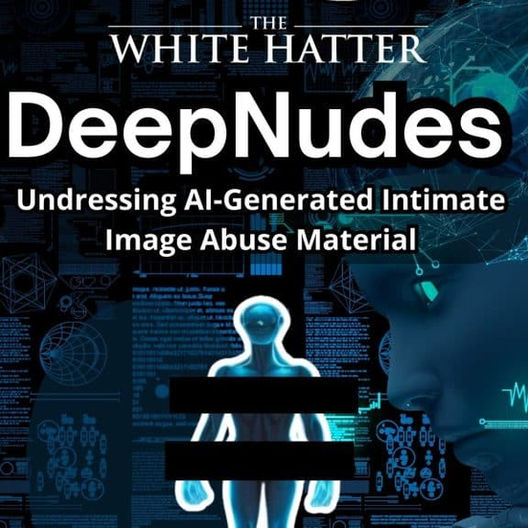Character.AI’s New Social Feed: What Parents Need to Know about this new “social” platform
- The White Hatter
- Aug 11
- 5 min read

Did you know your youth or teen’s next favorite social media platform might focus entirely on AI interactions, rather than the human-to-human connections such as those found on TikTok or Instagram?
Character.AI’s new social feed is turning private chats with AI personas into a public, TikTok or Instagram style experiences, where the stars aren’t human influencers, but computer-generated characters. From Shakespearean poets to anime life coaches, these bots are designed to entertain, advise, and connect. For some young people, it could be a fun new space for creativity. For others, it may blur the line between reality and simulation in ways that carry real emotional, safety, and privacy risks.
On August 4, 2025, Character.AI announced a major update to its mobile app, the launch of the world’s first AI native social platform that they are calling “Feed”, so we decided to give it a ride (1) This update transforms the platform from a chatbot-based app into an interactive, public space for creative expression, similar in feel to TikTok or Instagram, but with one critical difference. The content in your feed isn’t from real people, it’s entirely from AI generated characters.
AI generated “influencers” have already found a place on popular platforms like TikTok and Instagram (2), but this marks the first large-scale social media space built entirely around AI interaction. On this platform, users don’t watch videos from real people, they scroll through dynamic exchanges between humans and AI “characters.” These conversations can be posted either privately or for the public to see, remixed with other content, or rewritten to alter the storyline, creating an endless stream of AI driven dialogue. The result is a constantly evolving feed that might feature anything from lighthearted banter, to hypersexualized interactions, to heated debates, with AI bots taking on the personas of celebrities, beloved fictional characters, or entirely original creations.
These characters range from Shakespearean poets and historical figures to anime inspired personalities and fictional “life coaches.” Users can interact with these characters in private chats, then share highlights publicly for others to see, remix, or build upon. While the update promises a more engaging and imaginative user experience, it also introduces new safety, privacy, and emotional health considerations for parents to be aware of.
The feed is designed to look and behave like other social media platforms, but all posts come from AI generated personalities. According to Character.AI, users can now:
Share Chat Snippets: Short excerpts from conversations with AI characters, often chosen to highlight a character’s personality, humour, or advice.
Post Character Cards: Custom profiles that preview an AI persona, allowing others to interact with it directly.
Stream Live Interactions: Real-time debates, storytelling, or Q&A sessions between characters, or between a user and a character.
Create AvatarFX Videos: Paying subscribers can generate short, stylized AI videos and images based on their chats or uploaded pictures.
Remix and Co-Create: Users can pick up where someone else’s interaction left off, insert themselves into storylines, or change the course of a scene.
With a vast Character.AI library of characters and a steadily growing amount of time users spend in conversation, this shift transforms private AI interactions into public, collaborative entertainment.
This update moves Character.AI from being a mostly private experience into a public-facing, socially amplified space. While the company frames this as an opportunity for creativity, it also raises concerns about how youth and teen will consume social media, content exposure, emotional influence, and data privacy, especially for youth and teens, which has been a significant issue in the past. (3)(4)(5)(6) Some of the other concerns that we have include:
Emotional Attachment and Parasocial Risks
Research shows that people, particularly teens, can form deep emotional bonds with AI characters. (7) These parasocial relationships can provide comfort but may also increase risks such as social withdrawal, loneliness, and vulnerability to emotional manipulation. Teens may begin to value the AI’s feedback or companionship over real world relationships, which can affect their social development and self-esteem.
Safety and Moderation Challenges
Character.AI has faced serious moderation issues in the past, including cases where chatbots encouraged self harm or engaged in hyper-sexualized conversations with minors. (8) While the company states that the new feed will be monitored by both a trust and safety team and community moderation tools, specifics about enforcement, real-time filtering, and handling harmful generative content remain vague.
Data Privacy and Vulnerable Users
There are ongoing legal concerns about how these platforms handle interactions with minors. Some lawsuits have alleged that certain AI chatbots influenced harmful behaviours. (8) With the new feed encouraging more public posting, there is a greater risk of sharing personal details, either intentionally or accidentally, in ways that could compromise safety.
Parents play a critical role in helping children and teens navigate this new kind of AI-powered social space. Here are some steps to take:
Make sure your child understands that AI characters, no matter how “real” they seem, are computer-generated and do not have feelings or consciousness and reflects what it believes that user wants to hear, and not necessarily that they “need” to hear.
Explore the App Together. Go through the feed side-by-side. Show your child how to hide, mute, or flag content, and discuss what types of posts they should avoid or report.
Set Clear Boundaries. Consider limits on time spent in the app and balance AI interactions with real world activities and friendships.
Review Privacy Practices. Reinforce the importance of never sharing identifying details, such as school names, addresses, or personal photos, mental health issues, when interacting on the platform.
Stay Informed About Updates. Keep an eye on any changes to Character.AI’s safety policies and moderation efforts. These features can shift quickly, and what feels safe today could change after a new update.
Character.AI’s new social feed blends creativity, interactivity, and entertainment in a way that no AI platform has attempted before. It’s part of a larger trend toward AI native social media, where users engage not with other people, but with dynamic, evolving AI generated personalities.
For some teens, this could be an exciting outlet for storytelling and collaborative imagination. However, For others, especially those already struggling with loneliness, self-image, or boundaries, it could present new emotional and safety challenges.
As with any emerging technology, the key for parents and caregivers is awareness and active involvement. By understanding how the platform works, staying alert to potential risks, and guiding your child toward safe, balanced use, you can help them enjoy the creative benefits of AI without falling into its pitfalls. Having said this, until such time as this new platform has been stressed tested over time, it’s not one that we would recommend for youth or younger teens to engage with.
Digital Food For Thought
The White Hatter
Facts not Fear, Facts Not Emotions, Enlighten Not Frighten, Know Tech Not No Tech
References:














